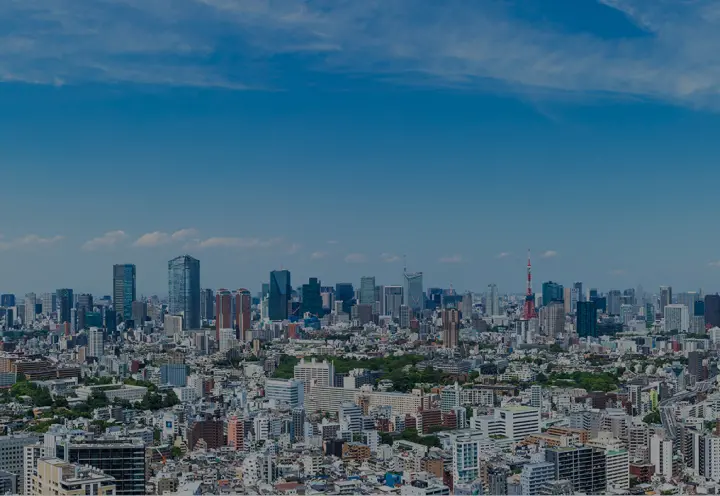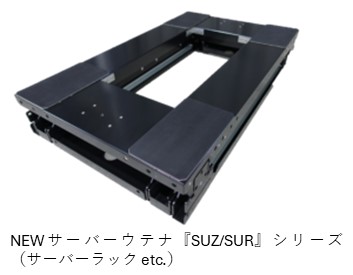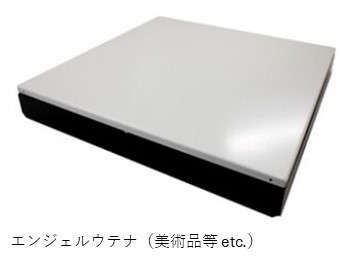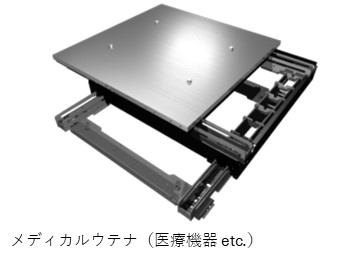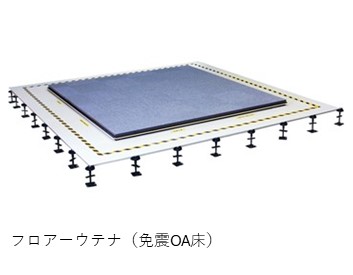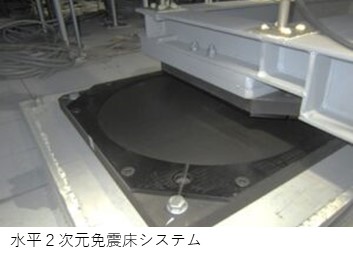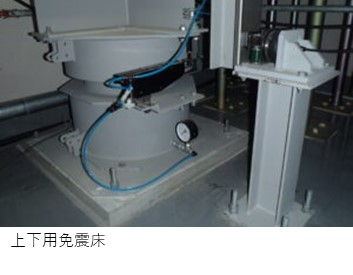Engineering Group, Division 1
Dai Yiqi
Seismic isolation" is a system that reduces the transmission of seismic shaking by installing a seismic isolation device between the location where seismic shaking is transmitted (ground, frame slab, etc.) and the structure to be isolated.
Figure 1 (a) shows an image of a generally recognized seismic isolation structure for buildings. This type of structure that isolates the entire building is called "building seismic isolation. There is also "equipment base isolation," which isolates the equipment inside the building, as shown in Figure 1(b).

(a) Building seismic isolation

(b) Equipment seismic isolation
Figure 1 Classification by seismic isolation target
Equipment seismic isolation can be classified according to the area to be isolated and the direction of isolation.
There are two types of seismic isolators: seismic isolators that exclusively isolate the seismic isolator and seismic isolators that isolate the entire floor. Seismic isolators, which exclusively isolate the seismic isolator, protect only the necessary equipment and can be installed in existing buildings relatively easily and cost-effectively. Seismic isolation floors are characterized by the fact that the entire room is base-isolated, allowing the equipment to be laid out freely.
Classification by seismic isolation direction is also classified into horizontal and vertical directions with respect to earthquake shaking.
In this article, we will discuss the differences and features between the vertical and horizontal construction of equipment seismic isolation.
of equipment seismic isolationClassification by seismic isolation direction
Horizontal seismic isolation
First, horizontal seismic isolators protect equipment from horizontal earthquakes. Horizontal seismic isolators consist of a mechanism that generates displacement, a mechanism that generates restoring force, and a mechanism that generates damping force.
Generally, it consists of linear guides (displacement), springs (restoring force), and oil dampers (damping force). This type of seismic isolation device has the characteristic that its seismic isolation performance varies depending on the installed load, so adjustment is necessary when the installed load changes significantly.
Figure 2 shows a horizontal seismic isolator employing Yakumo's arc rail structure. Displacement, restoring force and damping force are realized by the rail, gravity and frictional force, respectively. By using circular arc rails, the seismic isolator moves like a pendulum, and constant seismic isolation performance can be achieved regardless of the loaded load.
As a precaution for seismic isolation devices in buildings, if the natural frequencies of the seismic isolation device and the building are close to each other, resonance may occur, so careful consideration should be given to this issue when designing the device.

Figure 2: Arc Rail and Horizontal Equipment Isolation System
2. upper and lower seismic isolation
Recently, it is widely known that large vertical seismic motions are generated in the event of a direct earthquake. Therefore, when considering seismic isolation measures, it is necessary to consider not only horizontal but also vertical isolation equally.
Vertical seismic isolators consist of "leveling valves" that adjust the height, "air springs" that generate restoring force and support the load, "oil dampers" that generate damping force, "control devices" that control the air, and "seismic sensors" that detect earthquakes. The system maintains the floor level even if the frame slab vibrates, thereby reducing vibration in the vertical direction. Figure 3 shows a system overview diagram of the upper and lower equipment seismic isolation system.
The diaphragm-type air springs used by Yakumo have a characteristic that the natural frequency does not change significantly even when the load changes, thus ensuring stable seismic isolation performance regardless of the loaded seismic isolation floor. Furthermore, when used in combination with a building with horizontal seismic isolation measures, three-dimensional seismic isolation can be realized.

Fig. 3 Schematic diagram of upper and lower equipment seismic isolation system
Yacmo's seismic isolation products
1.horizontal seismic isolation
2.Vertical seismic isolation
